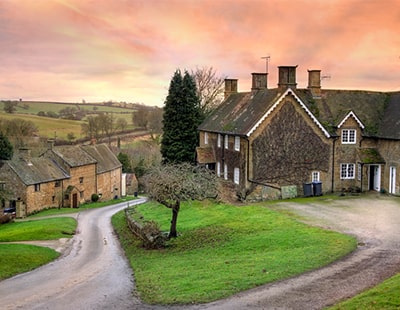During lockdown, property owners across the country were given pause for thought: the prospect of another lockdown has made the rural idyll seem newly attractive and, as the effects of Covid-19 subsist, a safe investment.
The rural property market has re-emerged since the initial relaxation of the first lockdown restrictions and is evidencing some curious trends.
A fundamental shift in what buyers are looking for has taken place across the board: luxury properties within thriving cities no longer boast the same magnetic pull, as Covid-19 has diluted the cultural and office-based advantages of the metropolitan lifestyle.
Individuals now appear instead to be looking for larger homes with more outdoor spaces and potential for development. The popularity of the commuter belt and the desire for countryside escapes has increased immensely among several key demographics, and the rural property market has benefited from these changes.
'Rural hotspots' – those areas which traditionally have been popular settings for second homes or rural-urban commuter properties – appear more desirable than ever. A Rightmove survey published in August 2020 found enquiries from city buyers for village properties to be up 126%.
Families with young children, particularly those who always envisaged eventual migration to the countryside, are moving sooner than they might have originally planned. The perceived need to live in central urban areas to support career development and enjoy the metropolitan lifestyle has been tempered by the rise of home-working.
That said, the city has not yet lost its relevance, and the need to commute – though less vital to work life – persists: areas such as the Cotswolds and Guildford that have decent infrastructure, amenities, and travel links which facilitate access to the city while also holding the advantages of country living are thriving.
Further Rightmove research in September found buyer searches in Lightwater, Surrey, up 130% on the year before, and areas with populations under 11,000 attracting the most enquiries.
What's more, individuals who already have a second home in the country are taking the opportunity to add to their property portfolio. Shrewd investors recognise that rural estate has the potential to provide a healthy source of income; others have simply seen the value of country living and are keen to secure another place to escape to in the event of another lockdown.
Supply in the rural market in these rural hotspots, as well as further afield, is far outstripped by demand. As competition for property within these areas intensifies, development and redevelopment of properties is on the rise.
Short-term development opportunities mean that buyers are able to enter the market at a lower initial price point, and new developments – both of residential property and of local amenities – are a means of either securing real estate in popular areas or 'placemaking' in less well-known areas, which may drive up value in the long term.
As Yolande Barnes, chair of the Bartlett Real Estate Institute at University College London, comments in our Future of Real Estate report: "Placemaking becomes the thing that drives investment, looking out for what the consumer wants and what will make the consumer happy becomes the important thing.”
Current uncertainties in the world aside, it also seems that buyers have an eye on the future as we see increasing numbers of buyers instruct planning specialists to give them a view of how an area is likely to change in the next 5-10 years.
Of further interest is the notion of the 'third space' in real estate. As home and work spaces coalesce, a void opens between these two worlds in which demand for spaces that satisfy the need for a change of environment arises; spaces which must at once facilitate socialising, co-working, and the provision of services which are unavailable within home office arrangements.
Philip Harvey, Senior Partner of Property Vision, notes in our report that the hospitality sector, even during this troubled time, has the potential to levy this need for a third space cleverly: “pubs will say ‘this is a great space to have a café during the day and maybe a pub at night. We can do takeaways,…we can show cinema,…repurpose what you've got to make it fit for purpose today’.”
Developers and buyers alike are becoming aware of the potential of this third space; and the rise of multi-purpose hubs between the city and the countryside may make rural living even more attractive.
The cloud looming over property buyers is how the tax landscape will change in the wake of Covid-related spending. The likelihood of the economy's recovery being in part reliant on wealth taxes means that increased property taxation may be on the horizon.
The SDLT holiday, while currently welcome, will soon end and upon the disappearance of those incentives may contribute to the property market shifting once more. At the same time, multiple dwellings relief is more likely to apply to rural properties where estates comprise more than one dwelling, and the anticipated rulings in the tax tribunal case on mixed use claims may also influence the landscape in its own way.
Covid-19 and its influence on government policy and global economics continues to drive the agenda. For the moment, the rural property market's prospects are rosy as demand for rural escapes or commuter properties increases, and any fears of a collapse in house prices have not yet been realised.
Our report explores how the real estate sector might change, and notes that the uncertainty might be the market's most unsettling characteristic. While no predictions are secure, those looking to enjoy the fruits of a buoyant rural property market should capitalise now on its new lease of life – it may not be here to stay.
*Edward Jarron is a Partner in Real Estate at Withers
























Join the conversation
Be the first to comment (please use the comment box below)
Please login to comment